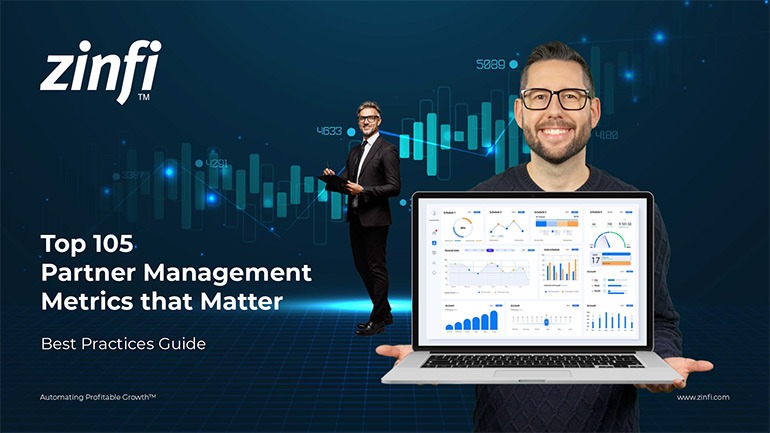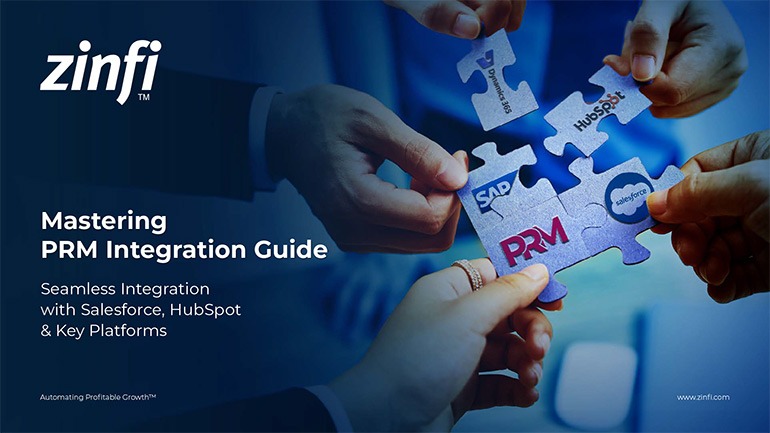Glossary - How to - Partner Relationship Management
How to Implement Partner Relationship Management?
Introduction
Partner Relationship Management (PRM) is a strategic approach used by organizations to manage relationships with their business partners, including distributors, resellers, affiliates, and service providers. PRM encompasses processes, technology, and best practices to optimize collaboration, enhance partner engagement, and drive revenue growth. In today’s competitive market, businesses rely heavily on indirect sales channels to expand their reach, making PRM essential for success.
A well-structured PRM system is crucial in automating and streamlining partner management tasks, such as onboarding, training, performance tracking, and lead distribution. PRM software solutions, like those offered by ZINFI, help companies centralize partner interactions, ensuring seamless communication and alignment with business goals. Effective PRM improves partner satisfaction, boosts productivity, and ultimately enhances profitability.
Key Takeaways:
Establishing a Strong Partner Onboarding Process:
Successful PRM begins with a well-structured onboarding process. New partners need proper training, resources, and clear expectations to maximize their effectiveness. Organizations should:
- Provide detailed training programs and certification courses.
- Offer easily accessible marketing and sales materials.
- Utilize PRM platforms to automate onboarding workflows.
Implementing an efficient onboarding strategy reduces ramp-up time, ensuring partners are productive.
Enhancing Partner Engagement Through Communication:
Regular and transparent communication is essential for building trust and strengthening partner relationships. Best practices include:
- Hosting regular webinars, training sessions, and Q&A forums.
- Using PRM tools to send automated updates and notifications.
- Creating a self-service partner portal with essential resources.
Effective communication helps partners align with your company’s goals and market strategies.
Implementing Performance Tracking and Analytics:
Measuring partner performance is key to optimizing the PRM strategy. Businesses should:
- Set clear KPIs for sales, engagement, and training completion.
- Use PRM dashboards to analyze data and identify top-performing partners.
- Offer incentives based on performance metrics to encourage growth.
Analyzing partner performance ensures companies can make data-driven decisions to improve collaboration and profitability.
Providing Continuous Training and Certification:
Keeping partners informed and skilled is vital for maintaining a competitive edge. Companies should:
- Develop ongoing training programs tailored to partner needs.
- Offer certification programs to validate expertise and credibility.
- Regularly update training materials to reflect industry trends.
Well-trained partners are more confident in selling and supporting products, leading to increased revenue.
Leveraging PRM Software for Automation:
PRM software solutions simplify partner management by automating repetitive tasks and centralizing data. Key features of PRM platforms include:
- Automated onboarding and training workflows.
- Lead distribution and deal registration tools.
- Partner performance tracking and analytics dashboards.
PRM software enhances operational efficiency and allows businesses to scale their partner networks effectively.
Summary of Key Takeaways:
- A structured onboarding process ensures partners are productive quickly.
- Consistent communication fosters trust and engagement.
- Performance tracking helps optimize partnerships.
- Ongoing training enhances partner expertise and sales capabilities.
- PRM software automates and streamlines partner management efforts.
Key Examples:
- Automotive Manufacturing: PRM helps manufacturers manage relationships with dealerships and service providers. Effective PRM ensures standardized training, streamlined inventory management, and enhanced customer service experiences.
- Consumer Electronics: Electronics brands use PRM to collaborate with retailers, resellers, and e-commerce partners. A PRM system enables efficient product launches, co-marketing initiatives, and performance tracking to optimize sales channels.
- Energy Production: Energy companies rely on PRM to manage partnerships with suppliers, contractors, and distributors. PRM software helps ensure compliance, track performance metrics, and coordinate large-scale projects effectively.
- Financial Services: Banks and financial institutions use PRM to manage affiliate relationships, referral programs, and independent advisors. Secure PRM platforms enable seamless collaboration while ensuring regulatory compliance.
- Food and Beverage: In the food industry, PRM helps brands work with distributors, wholesalers, and franchisees. Effective partner management ensures consistent branding, quality control, and promotional alignment across all locations.
- Healthcare Services: Healthcare organizations use PRM to coordinate with suppliers, medical device manufacturers, and insurance providers. A PRM system enhances supply chain efficiency and compliance with industry regulations.
- Information Technology: Tech companies use PRM to manage resellers, system integrators, and service providers. PRM platforms facilitate lead sharing, technical support, and co-marketing campaigns, driving business growth.
- Pharmaceutical Development: Pharmaceutical firms use PRM to manage collaborations with research institutions, distributors, and healthcare providers. PRM ensures smooth coordination for product distribution, regulatory approvals, and clinical trials.
- Retail Industry: Retailers rely on PRM to manage vendor relationships, marketing campaigns, and omnichannel sales strategies. PRM solutions streamline inventory management and improve customer experiences.
- Telecommunications: Telecom companies use PRM to coordinate with channel partners, service providers, and resellers. PRM tools help automate commission tracking, training programs, and promotional campaigns.
Conclusion:
Implementing an effective Partner Relationship Management strategy is essential for businesses looking to optimize their channel partnerships. PRM enhances partner onboarding, improves engagement, and provides actionable insights through performance tracking. By leveraging PRM software, organizations can automate partner interactions and scale their networks efficiently.
Industry-specific examples highlight the versatility of PRM in various sectors, from automotive to telecommunications. Regardless of the industry, businesses prioritizing PRM strategies benefit from increased efficiency, stronger partnerships, and higher profitability. PRM will remain a cornerstone of thriving partner ecosystems as companies embrace digital transformation.
Associated Keywords:















